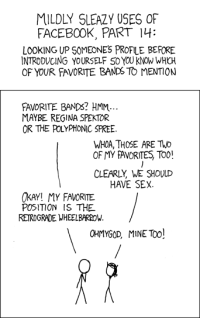From Psyblog:
Research finds that people or objects moving from left to right are perceived as having greater power (Maass et al., 2007):
- Soccer goals are rated as stronger, faster, even more beautiful when the movement of the scorer is from left to right, rather than right to left.
- Film violence seems more aggressive, more painful and more shocking when the punch is delivered from left to right, compared with right to left.
- Cars in an advert are rated as stronger and faster when they are moving from left to right, rather than right to left (take note advertising executives!).
Perhaps it’s no coincidence that athletes, cars and horses are all usually shown on TV reaching the finishing line from left to right.
According to other studies mentioned by Maass et al, in Western societies most people also tend to preferentially imagine events evolving from left to right, picture the situations in subject-verb-object sentences with the subject on the left of the object, look at new places rather than old ones more when stimuli show up in a left to right order, memorize the final positions of objects further along the implied path more when they are moving left to right, imagine number lines and time increasing from left to right, and scan their eyes over art in a left to right trajectory.
Why is this?
It seems likely that this left to right bias has its roots in language… people who speak languages written from right to left like Arabic or Urdu … display the same bias, but in the opposite direction.
So Maass and the others guessed that characters perceived as more active would also tend to be depicted on the left of more passive characters in pictures. Their research agreed:
We propose that spatial imagery is systematically linked to stereotypic beliefs, such that more agentic groups are envisaged to the left of less agentic groups. This spatial agency bias was tested in three studies. In Study 1, a content analysis of over 200 images of male–female pairs (including artwork, photographs, and cartoons) showed that males were over-proportionally presented to the left of females, but only for couples in which the male was perceived as more agentic. Study 2 (N = 40) showed that people tend to draw males to the left of females, but only if they hold stereotypic beliefs that associate males with greater agency. Study 3 (N = 61) investigated whether scanning habits due to writing direction are responsible for the spatial agency bias. We found a tendency for Italian-speakers to position agentic groups (men and young people) to the left of less agentic groups (females and old people), but a reversal in Arabic-speakers who tended to position the more agentic groups to the right. Together, our results suggest a subtle spatial bias in the representation of social groups that seems to be linked to culturally determined writing/reading habits.

Adam appeared on the left in 62% of paintings considered, far less than Gomez Addams is portrayed on the left of Mortissa (82%). (Picture: Peter Paul Rubens)
Note that the first study only looked at four couples; Adam and Eve, Gomez and Mortissa Addams, Fred and Wilma Flinstone, and Marge and Homer Simpson. The last three were compared to surveyed opinions on the couple’s relative activeness, dominance and communion, and the Flinstone and Simpson couples were found to be about equal. An earlier study also found that Gabriel was portrayed to the left of Mary 97% of the time.
Most languages also mention the (active) subject before the object, which means the active entity is on the left when written in a left-to-right language. Grammar predates writing, so if this ordering of nouns is relevant, as the researchers suggest, it seems it combines with the direction of writing to cause the left to right bias. It would be interesting to see whether natives to the few languages who put the object before the subject have this bias in the other direction. It would also be interesting to see whether the layout of sentences more commonly influences our perceptions of the content, or whether the effect is so weak as to only have influence over years of parsing the same patterns.



